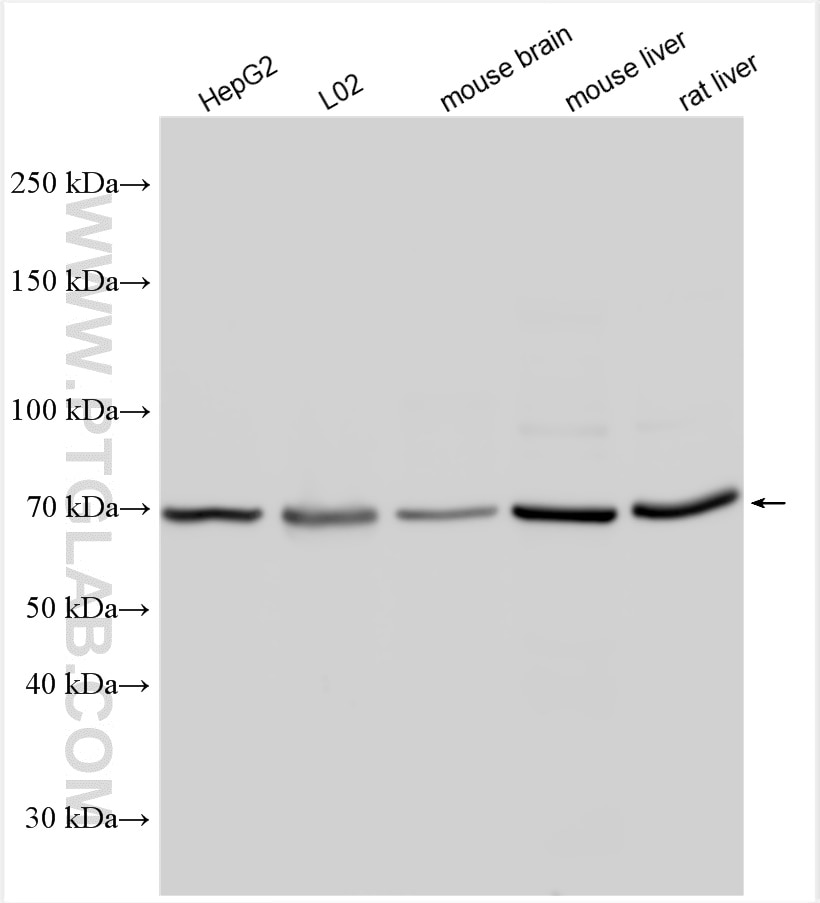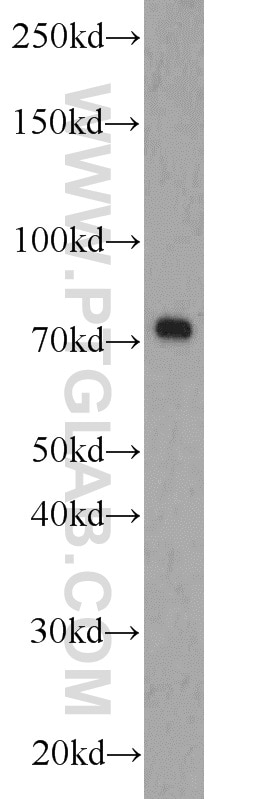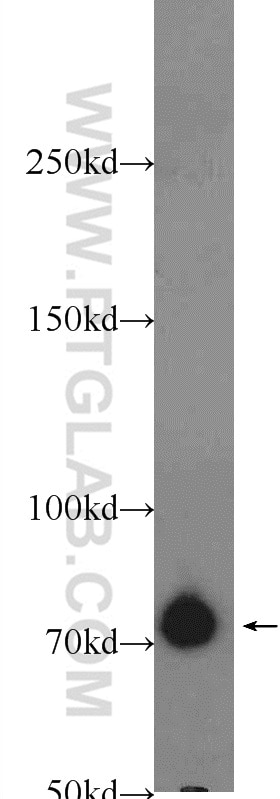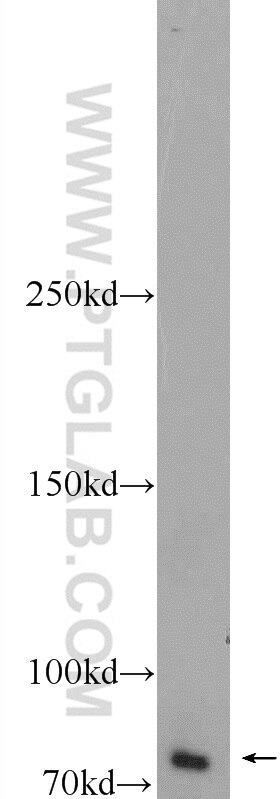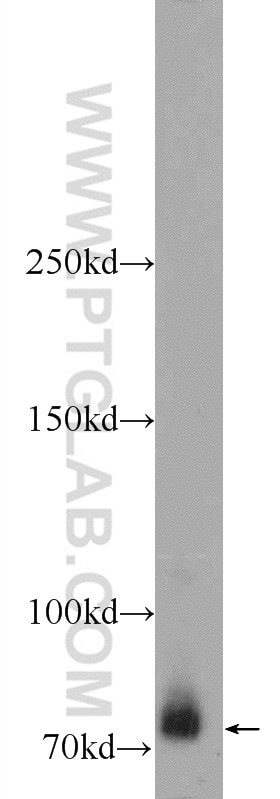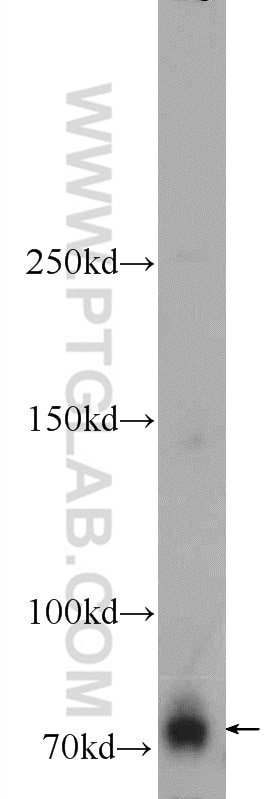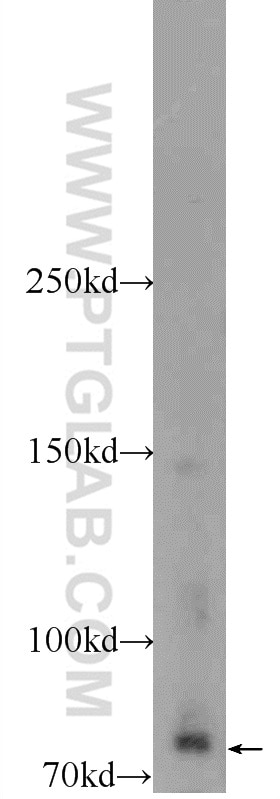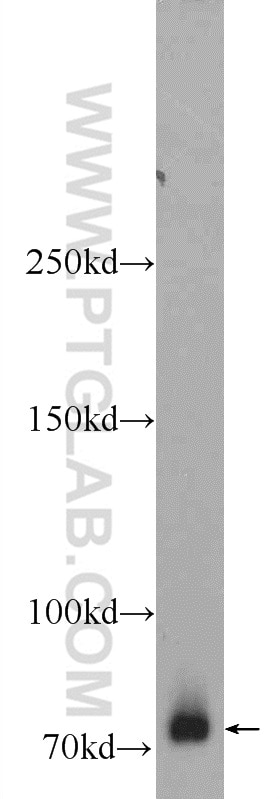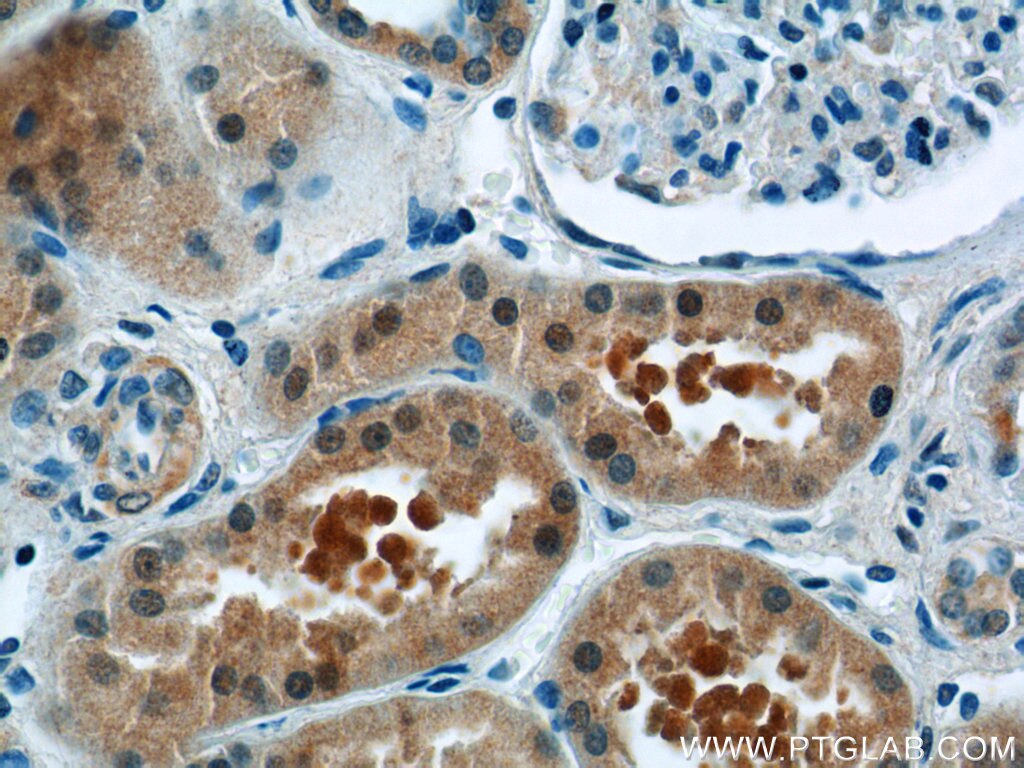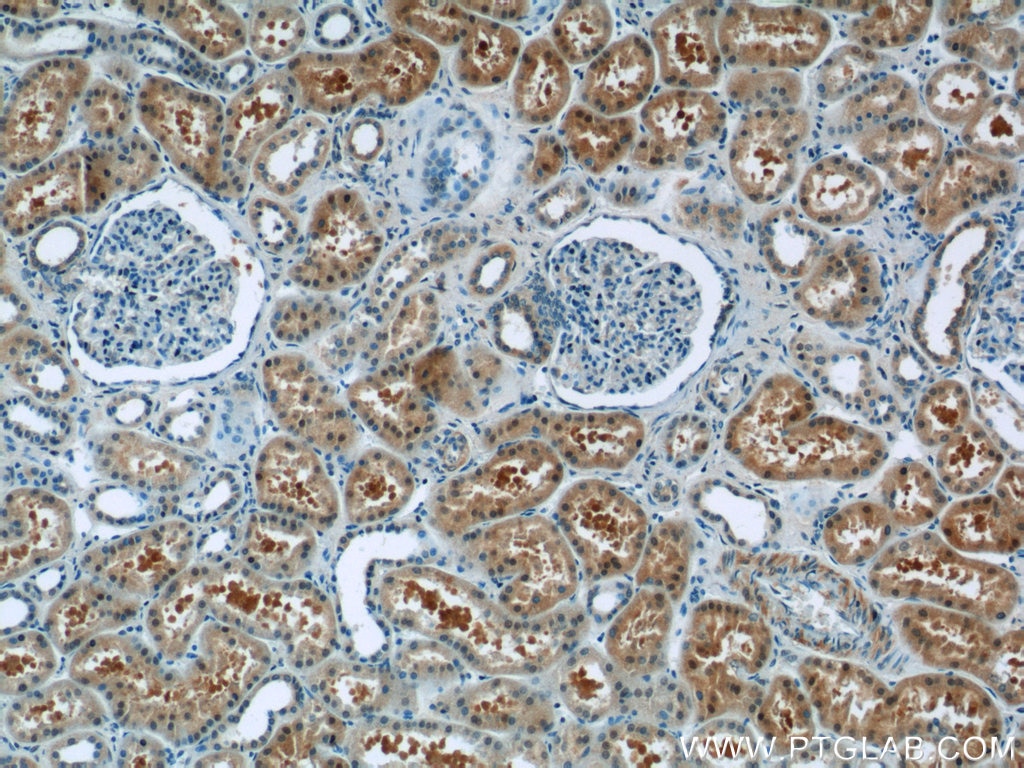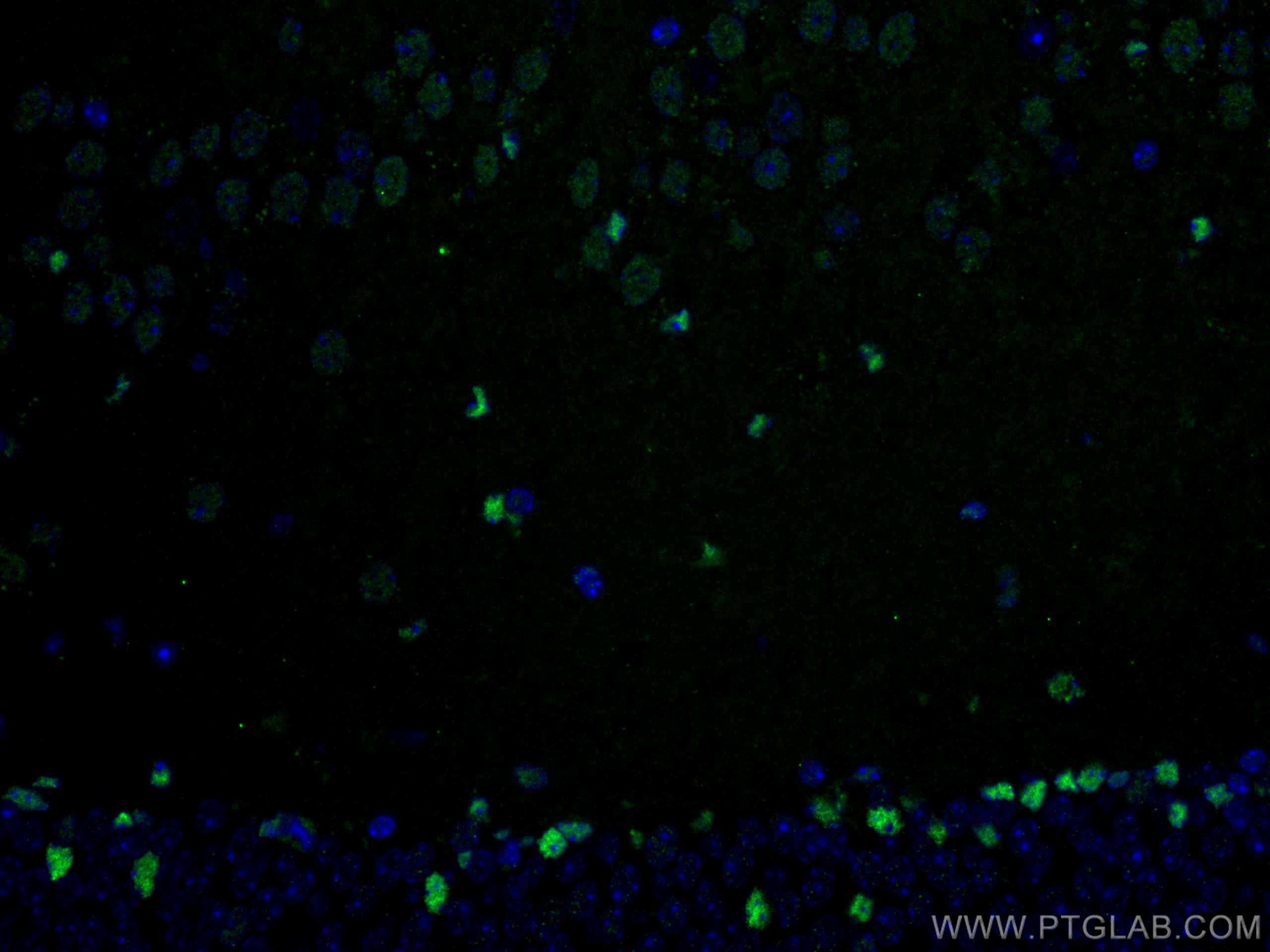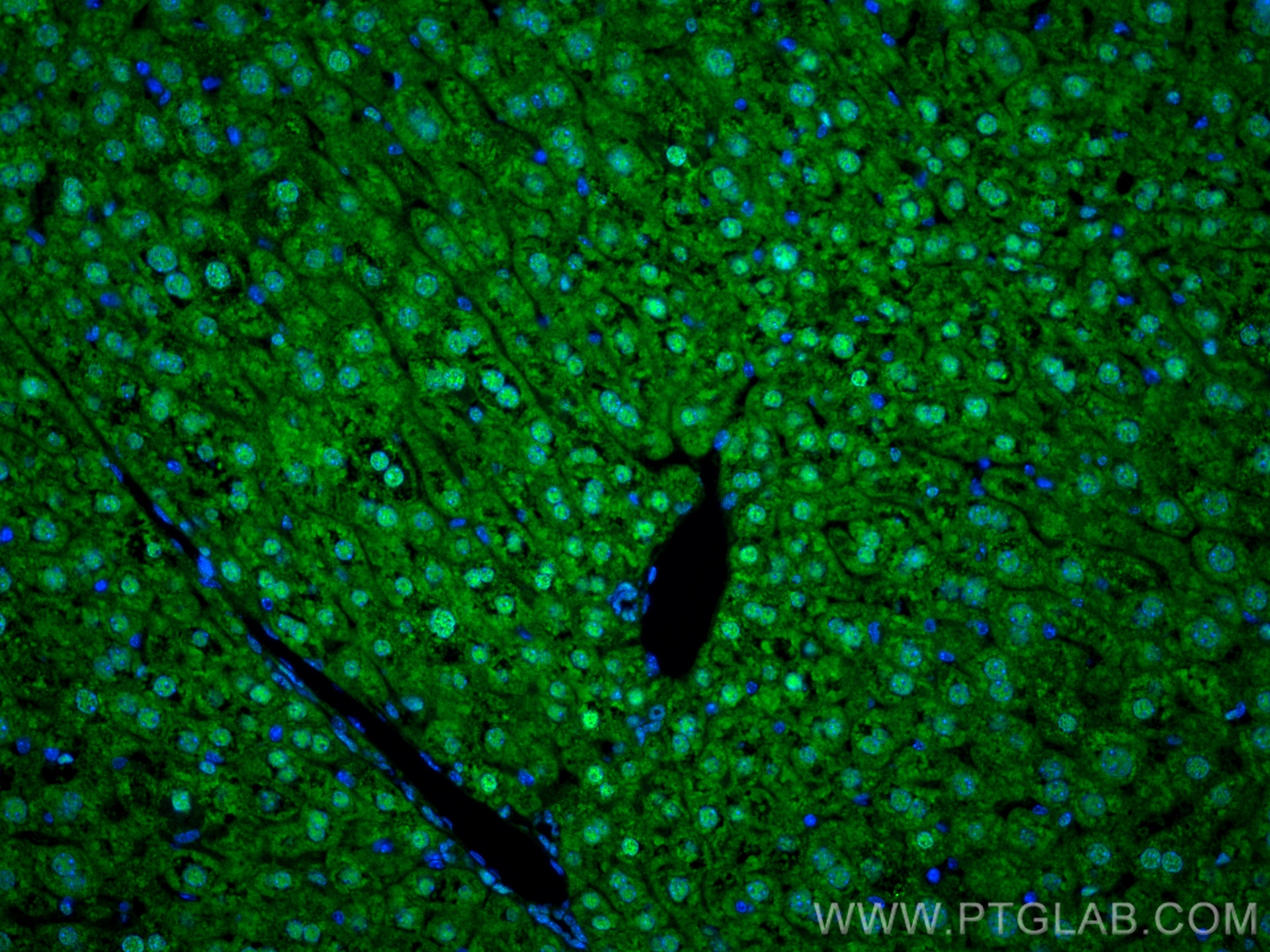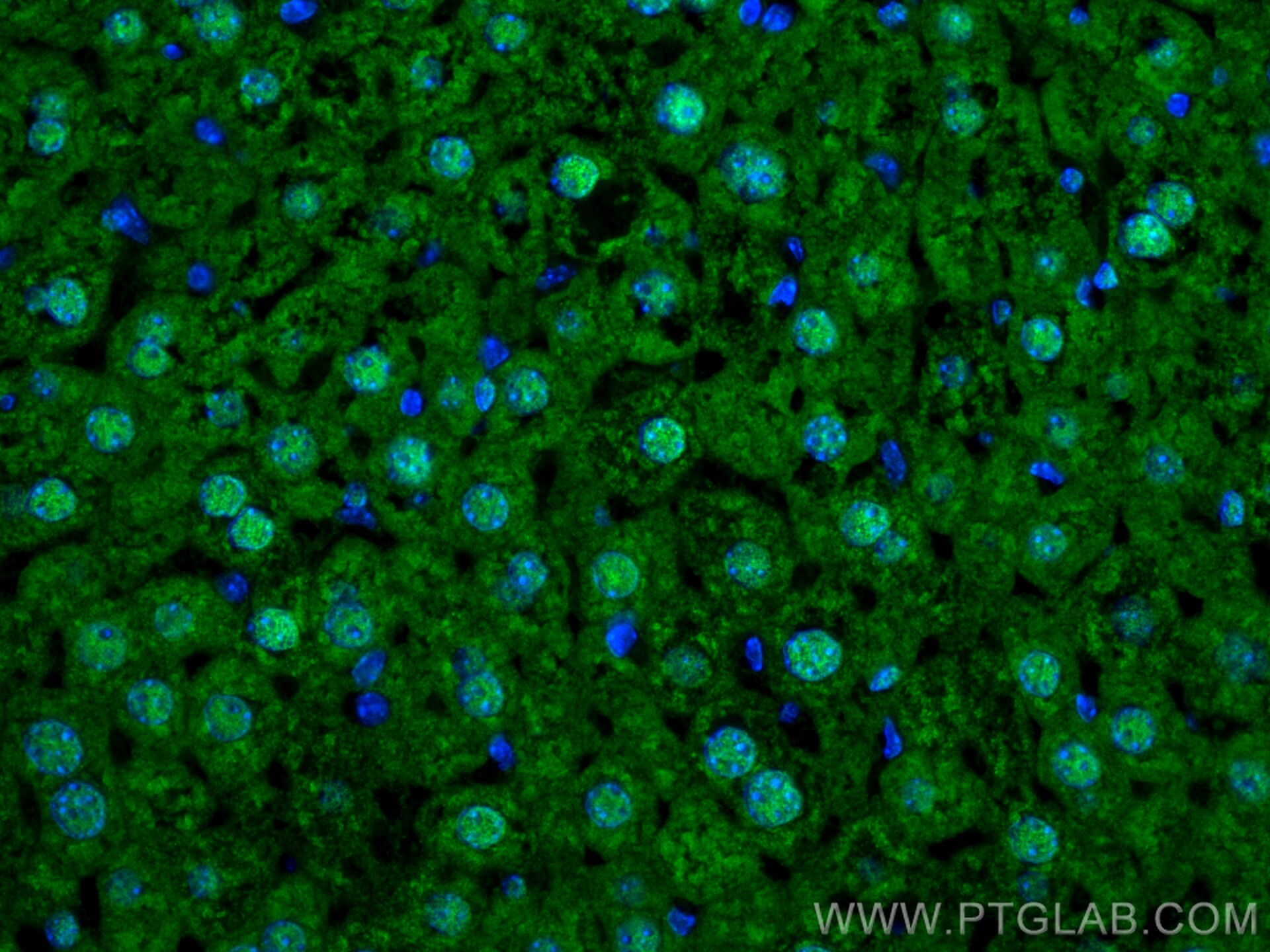- Phare
- Validé par KD/KO
Anticorps Polyclonal de lapin anti-ZBTB20
ZBTB20 Polyclonal Antibody for WB, IHC, IF-P, ELISA
Hôte / Isotype
Lapin / IgG
Réactivité testée
Humain, rat, souris
Applications
WB, IHC, IF-P, ELISA
Conjugaison
Non conjugué
N° de cat : 23987-1-AP
Synonymes
Galerie de données de validation
Applications testées
| Résultats positifs en WB | cellules HepG2, cellules HEK-293, cellules Jurkat, cellules L02, cellules RAW 264.7, tissu cérébral de souris, tissu hépatique de rat, tissu hépatique de souris |
| Résultats positifs en IHC | tissu rénal humain il est suggéré de démasquer l'antigène avec un tampon de TE buffer pH 9.0; (*) À défaut, 'le démasquage de l'antigène peut être 'effectué avec un tampon citrate pH 6,0. |
| Résultats positifs en IF-P | tissu hépatique de souris, tissu cérébral de souris |
Dilution recommandée
| Application | Dilution |
|---|---|
| Western Blot (WB) | WB : 1:2000-1:10000 |
| Immunohistochimie (IHC) | IHC : 1:20-1:200 |
| Immunofluorescence (IF)-P | IF-P : 1:300-1:1200 |
| It is recommended that this reagent should be titrated in each testing system to obtain optimal results. | |
| Sample-dependent, check data in validation data gallery | |
Applications publiées
| KD/KO | See 1 publications below |
| WB | See 9 publications below |
| IHC | See 3 publications below |
| IF | See 3 publications below |
Informations sur le produit
23987-1-AP cible ZBTB20 dans les applications de WB, IHC, IF-P, ELISA et montre une réactivité avec des échantillons Humain, rat, souris
| Réactivité | Humain, rat, souris |
| Réactivité citée | rat, Humain, souris |
| Hôte / Isotype | Lapin / IgG |
| Clonalité | Polyclonal |
| Type | Anticorps |
| Immunogène | ZBTB20 Protéine recombinante Ag21140 |
| Nom complet | zinc finger and BTB domain containing 20 |
| Masse moléculaire calculée | 668 aa, 73 kDa |
| Poids moléculaire observé | 73 kDa |
| Numéro d’acquisition GenBank | BC029041 |
| Symbole du gène | ZBTB20 |
| Identification du gène (NCBI) | 26137 |
| Conjugaison | Non conjugué |
| Forme | Liquide |
| Méthode de purification | Purifié par affinité contre l'antigène |
| Tampon de stockage | PBS with 0.02% sodium azide and 50% glycerol |
| Conditions de stockage | Stocker à -20°C. Stable pendant un an après l'expédition. L'aliquotage n'est pas nécessaire pour le stockage à -20oC Les 20ul contiennent 0,1% de BSA. |
Informations générales
Zinc-finger proteins contain DNA-binding domains and have a wide variety of functions, most of which encompass some form of transcriptional activation or repression. ZBTB20 (zinc finger and BTB domain containing 20), also known as HOF, DPZF, ODA-8S or ZNF288, is a 741 amino acid protein that localizes to the nucleus and contains one BTB (POZ) domain and five C2H2-type zinc fingers. Expressed in thymus, spleen, lymph node and fetal liver, ZBTB20 exists as either a monomer or a homodimer that is thought to function as a transcription factor, playing a role in hematopoiesis, oncogenesis and immune responses. Multiple isoforms of ZBTB20 exist due to alternative splicing events.
Protocole
| Product Specific Protocols | |
|---|---|
| WB protocol for ZBTB20 antibody 23987-1-AP | Download protocol |
| IHC protocol for ZBTB20 antibody 23987-1-AP | Download protocol |
| IF protocol for ZBTB20 antibody 23987-1-AP | Download protocol |
| Standard Protocols | |
|---|---|
| Click here to view our Standard Protocols |
Publications
| Species | Application | Title |
|---|---|---|
Mol Cell Proteomics Selective modulation of the human glucocorticoid receptor compromises GR chromatin occupancy and recruitment of p300/CBP and the Mediator complex
| ||
Cell Prolif In vivo development and single-cell transcriptome profiling of human brain organoids. | ||
J Inflamm Res Aberrant Fluid Shear Stress Contributes to Articular Cartilage Pathogenesis via Epigenetic Regulation of ZBTB20 by H3K4me3. | ||
Wellcome Open Res The integration site of the APP transgene in the J20 mouse model of Alzheimer's disease. | ||
Cell Rep Identification of dynamic RNA-binding proteins uncovers a Cpeb4-controlled regulatory cascade during pathological cell growth of cardiomyocytes. | ||
Transpl Immunol ZBTB20 regulates cardiac allograft rejection through NFкB-mediated inflammation in mouse heart transplantation. |
